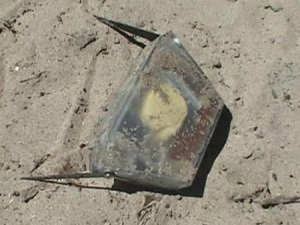Scientists at University of Minnesota's Center for Distributed Robotics developed the Aquapod to deal with rough terrain and obstacles. The Aquapod moves around the place by tossing itself end-over-end and produces a somersaulting movement.
 Aquapod
Aquapod
Researchers stated that the tumbling robot features two arms made from carbon fiber, which is linked to the servo motors for constant rotation. The Aquapod is waterproof and has the ability to float, sink, or vary its buoyancy. This robot functions well on land as well as in water. It has the capability to sink to the bottom of the waterbed and tumble along.
The Aquapod does not move at high speed, but it can effectively navigate through sand and over slippery surfaces. The robot’s offset arms helps it to make way through vegetation and other obstacles.
The Aquapod could prove useful for aquatic sensor deployment or water surveillance. It can be used in applications that require several of them to work together and float down rivers either by floating or sinking and taking required measurements as they move.
The robot could be used to track fish population during winter by sticking it under a frozen lake. The robot has the capability to navigate on the underside of the ice in an upside-down position.